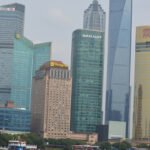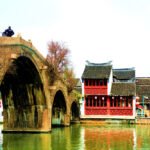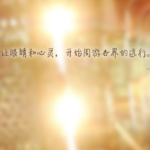Duration: 2 days Time: December Cost per person: 640 yuan With whom: Family Activities: Free travel, weekend trip The author visited these places: Shanghai People’s Square, The Bund, Huangpu River, Oriental Pearl Tower, Jin Mao Building, Lujiazui, Chen Yi Square, Shanghai Heroes Memorial Tower, Waibaidu Bridge, Pujiang Hotel, Seagull Hotel, Suzhou River 1933 Old Factory, published on 2019-12-23 10:30. I’ve always wanted to visit Shanghai to experience the charm of a metropolis and explore the surrounding water towns and ancient villages. Our family of three, with our son Xiao Bao who is in the fourth grade of primary school, also needed to broaden our horizons and gather firsthand experiences for his future essays. Considering that the Spring Festival would arrive early in 2020, and not wanting to join the crowds during Christmas and New Year, we decided to choose a weekend to travel. We took the high-speed train from Hefei to Shanghai early on Saturday morning. On the early morning of December 7th, we boarded the G7434 high-speed train to Shanghai on time. We quickly passed Wuxi and Suzhou, and arrived at Shanghai Hongqiao Station around 9:50. Originally, we planned to visit Zhouzhuang water town on the first day, taste the famous Wansan Pork Knuckle, and then stroll around the city center of Shanghai on the second day, enjoying afternoon tea. This way, we could spend one day in the countryside and one day in the city, preventing aesthetic fatigue. After exiting Hongqiao Station, I contacted our pre-booked driver, Mr. Wu, to drive us directly to Zhouzhuang. Upon hearing our destination, Mr. Wu shook his head and said that Zhouzhuang has become too commercialized and no longer has the charm of a traditional water town. Moreover, the entrance fee is 100 yuan per person, which would be 300 yuan for three people, making it a bit expensive. Instead, he suggested visiting two other ancient towns, Qingpu Jinkang or Kunshan Luzhi, both of which do not charge admission fees and are not crowded with tourists. Zhouzhuang’s features of small bridges, flowing water, and residential houses can also be seen in Jinkang and Luzhi. Considering the savings of 300 yuan, I agreed to visit the closer one first. Mr. Wu said Jinkang was closer, so we decided to go there. The car got on the highway and drove along the G50 National Road for about 45 minutes until we reached the ancient town of Jinkang, located next to the Huqingping Highway. Entering the town along Jinxi Road, there was no sign of an entrance fee at the town gate. After crossing the Jinxi Bridge and turning right, we saw the appearance of a water town, with gentle rivers, quiet stone arch bridges, and riverside houses with black bricks and tiles, arranged in an orderly manner, just like what you see on TV. The paths along the river are paved with stone slabs, exceptionally clean, and there are very few people on the road, making one feel instantly calm. Even on a Saturday morning, there are few tourists here, and it has not been commercialized at all. It is said that Jinkang is a famous bridge town, known as ‘the first bridge town in Jiangnan’. The small town has seven ancient bridges built across the Song, Yuan, Ming, and Qing dynasties, each bridge representing a period of history. They quietly lie across the clear water, telling their own stories.
The small town is simple, natural, clean and quiet. We walked along the small river in the ancient town and passed by bridges of various styles. It was very comfortable and惬意, and we were completely relaxed. When we passed the second bridge, we saw that there were cruise ships available at the end of the bridge. One boat cost 60 yuan. The three of us chartered a wooden boat. In fact, it was only 20 yuan per person. It felt okay. Xiaobao was extremely happy. As soon as he got on the boat, he went to the stern to see how the boatman steered the boat with a bamboo pole. This was the first time sitting on such a black-awning boat. It felt like being in Lu Xun’s novel. The boat glided slowly. The buildings along the river on both sides slowly receded. Time seemed to stand still. The sunlight was slightly intoxicating. There was a peaceful atmosphere. Looking at the satisfied expressions of Xiaobao and his wife, I felt that coming all the way from Hefei in the morning and being able to appear in the water town and ancient town in four hours was really enjoyable! After a while, we got ashore and walked back along the path. There were many old people basking in the sun on the road. Few young people were seen. Upon inquiry, it turned out that the young people in the town found the ancient town too quiet and there were no entertainment activities. They all went to work in Qingpu or Shanghai. Those who stayed were the nostalgic older generation. Later, the old man said that there was an ancient ginkgo tree in the town that was more than 700 years old. We should go and take a look. Originally, not far from the dock, there was an ancient temple called ‘Yihao Zen Temple’. In this season, the ginkgo leaves in the temple had all turned golden yellow. The entire tree was translucent and yellow, shining golden, just like a money tree. I remember there is a thousand-year-old internet-famous ancient ginkgo tree in Xi’an. In fact, this ancient ginkgo tree in Jinze is equally eye-catching and is in no way inferior to that in Xi’an. On the ground under this ginkgo tree, there was a thick layer of ginkgo leaves, feeling like a layer of golden carpet. It was extremely beautiful! It can completely become an internet-famous check-in place. Fortunately, there are not too many tourists coming yet. Otherwise, taking pictures would also require queuing. The guard in the temple said that taking a few fallen ginkgo leaves back for Xiaobao can be used as a bookmark and also has the function of warding off evil spirits for children. It’s really good. I feel quite lucky. This souvenir is really blessed! As we strolled around, it was already noon before we knew it. It seemed that there were not many restaurants in the town. I called Master Wu and asked him for any recommendations. He said that there was a good local restaurant in the alley on the side road. He had been there before. The boss is a woman named Sister Zhou Er. She is also the chef. The dishes are all local water town dishes. We entered the restaurant with a very small facade. There was no menu inside. We ordered by looking at the dishes. We ate whatever was available. However, the vegetables and fish looked quite fresh. The three of us ordered several home-cooked dishes, including chopped cold chicken, sweet and sour spare ribs, pond loach and fish tofu soup, garlic water spinach, and bamboo shoot barbecue. It was not bad. The dishes were served quickly. The three of us also got a small private room and had a comfortable lunch.

Upon finalizing the bill, it was only 128 yuan, averaging a little over 40 yuan per person, truly affordable. I felt as if I had earned back something. Typically, at tourist attractions, the food is either unpalatable or prohibitively expensive; it’s rare to find something both inexpensive and delicious. After a satisfying meal, it was only 2 o’clock, and feeling it was still early, I asked Master Wu about the distance to Luzhi. He responded it was approximately 50 kilometers. It didn’t seem too far, so we set off. The roads were not congested, and we arrived before three. The ancient town of Luzhi had a considerable scale. At the entrance, there was a sculpture of a mythical beast, a stele for the ancient town, and a screen wall, with a large parking lot on the side and a visitor center to the left. Beyond the visitor center lies the scenic area of the ancient town. Inside, boat tour tickets were available; upon inquiring, a half-hour ride on a boat for up to eight people cost 150 yuan, which was 90 yuan more expensive than in Jinze. Fortunately, we visited Jinze first, and I felt as if I had earned back that amount. Walking directly into the scenic area from the main gate, the ancient town was very clean. As soon as we entered, we saw the mythical beast Luzhi on an open square, which was considered the main entrance of the town. There was no need to buy a ticket to enter the main gate; only the attractions within the scenic area, such as the Shen Mansion, Bao Sheng Temple, Ye Shengtao Memorial Hall, and Jiangnan Cultural Park, required tickets. We strolled around casually, going wherever the path led. Entering the scenic area felt like unfolding a historical scroll. The Wan Sheng Rice Shop from Ye’s pen in ‘Extra Harvest of Three to Five Pecks’ came to mind, with the image of crowded open-roofed grain boats, tenants wearing felt hats, and the peculiar grain shop accountants. It was a deep feeling of how difficult life was for farmers in the past. Sitting on the riverside corridor for a rest, watching the boatwomen rowing through the waterways, a trail of water would emerge on the river’s surface. Luzhi’s ancient town streets run parallel to the river; the upper and north sides are Shang Tang Street, while the south and east sides are Xia Tang Street. The streets are generally 2.5 to 5 meters wide, and the alleys perpendicular to the river are about 1 to 3 meters wide. The longest alleys stretch up to 150 meters, with houses in the lanes having three, five, or six courtyards, and the deepest even seven. The streets and alleys are paved with stone slabs or cobblestones, with smooth water flow and dry roads after rain. Shops and local snacks and restaurants line both sides of the streets, reminiscent of the town’s former prosperity. Luzhi is significantly more bustling than Jinze, with a much larger flow of people, yet the atmosphere of a water town remains, making it a great experience for children. The water towns of Jiangnan have a humanistic charm, with rivers, small bridges, docks, wooden boats, and passing vessels, all of which are sights unseen in inland cities. Observing these scenes, I felt that this was a traditional, humanistic, and unhurried experience. It’s much better for children to experience this than staying at home playing video games excessively.
Chinese aesthetics is often understated, requiring a slow and thoughtful appreciation. It’s difficult to describe precisely, but standing by the river, one can sense a unique ambiance. Our little one grew tired, so we bought a bottle of oolong tea for him to rest on a stone bench by the river. My wife, taking advantage of the moment, purchased a bag of Lu Zhi radish from a nearby sauce garden for 6 yuan, a local specialty that can be stir-fried with edamame. By around 5:30 PM, we had nearly finished exploring as the sky gradually darkened, and it was time to head back to our hotel. On the ride, we discussed Lu Zhi with Master Wu, who recommended trying the famous Ao Zao noodles, exclusive to Kunshan where Lu Zhi is located. We agreed to give it a try, and Master Wu drove us to a clean noodle shop in town. We ordered three bowls of Ao Zao duck noodles, each with a generous portion of braised pork, totaling 90 yuan. The hot, red soup with white noodles was quite economical and satisfying. After our meal, we returned to our hotel, the Mercure on Fuquan Road, conveniently close to the subway and surrounded by commercial facilities, offering good value for money. The proximity to the subway would save us time and effort the next day. The expenses for the first day included the car rental, boat fees in Jinze, a four-course lunch, and the evening noodles. We didn’t spend much on attraction tickets but visited two water towns and enjoyed a boat ride, which was quite cost-effective. Reflecting on it, perhaps skipping Zhouzhuang was the right choice, as water towns are quite similar, and Zhouzhuang’s entrance fee is indeed high. Renting a car also allowed us the flexibility to stop and take photos at any bridge we liked, which was quite convenient. Master Wu, an experienced and amiable driver familiar with the routes, recommended some excellent places, which was fortunate for us. On the second day, after breakfast at the hotel, we prepared to explore the city. We checked out at 8:30 AM, stored our luggage, and took the subway line 2 opposite the hotel. It wasn’t long before we arrived at People’s Square Station. From there, we took a small train outside the No.1 Department Store, costing 6 yuan per person, which the children enjoyed. The train traversed the pedestrian street lined with shops, giving us a feel for window shopping. The final stop was at the intersection of East Nanjing Road and Henan Road, a 10-minute walk from the Bund. The Bund is an iconic Shanghai landmark, featured in countless movies and TV dramas, and is one of the most symbolic attractions of the city. To the east lies the Huangpu River and the new Bund embankment, while the west side is adorned with various styles of Chinese and Western architecture. For over a century, the Bund has represented Shanghai to the world, serving as a microcosm of modern Shanghai’s history.
The Bund is truly beautiful, as picturesque as it is often portrayed on television, with no exaggeration. Visitors to Shanghai invariably make their way to the Bund, where one can leisurely stroll along the embankment and admire the iconic landmarks such as the Oriental Pearl Tower, Jin Mao Tower, and Shanghai Tower across the river. Most importantly, one should take in the architectural ensemble along the Bund that showcases a fusion of international styles. This is a fantastic spot for a photo opportunity, with the Oriental Pearl Tower, Shanghai Tower, river views, gentle breeze, and tourists all harmoniously blended together. As you walk along the riverbank, you’ll encounter couples of various ages, some smiling and others supporting each other for a photo in front of the railing, with the backdrop of the symbol of the metropolis, the resplendent and bustling Lujiazui with its towering skyscrapers. Everyone who comes here tends to pause, captivated by the beautiful scenery and the affectionate couples on display. With the river breeze blowing gently, leaning on the railing, this is the best window to understand Shanghai. Behind you lies the century-old foreign concession of the Bund, and before you stands a microcosm of Shanghai’s rapid development over the past three decades. Time and space seem to intersect here, and as you gaze at the river flowing eastward, you can’t help but reflect on the passage of time and the fleeting nature of life. Xiao Bao was extremely excited on his first visit to the Bund! Especially when he saw several white seagulls gliding over the river, his eyes widened, and he watched for a long time. The child loved this place and stayed by the railing of the river embankment for quite a while. Coincidentally, a tour group passed by, and a guide introduced it like this: ‘Standing on the Bund’s embankment, facing Pudong, with Puxi behind you, behind is Shanghai’s past, the十里洋场 and the British-American concessions; ahead is Shanghai’s future, Pudong Lujiazui, the international financial center. The past, present, and future intersect here, and you are in the midst of history’s progress!’ I meticulously noted down every word and saved it in the notes app on my phone. If Xiao Bao could incorporate this passage into his composition, it would truly be a golden sentence! Isn’t art derived from life? It’s really important to get out more, broaden one’s horizons, see and hear more to enrich one’s perspective! Passing through Chen Yi Square, the Shanghai People’s Hero Memorial, and the Waibaidu Bridge, and then across the street to the right, there is a five-story building made of stone, concrete, bricks, and wood, which is the Pujiang Hotel, also known as the ‘Astor House.’ This hotel is no ordinary establishment; it was founded in 1846 by a British man named Richard and later, in 1860, it was taken over by a British businessman named Smith. After the change in ownership, the hotel’s facilities were greatly improved, and many of the first Western technologies introduced in China were showcased here, such as telephones, electric lights, movies, and running water.
Many celebrities have visited here, such as former US President Grant, philosopher Russell, scientist Einstein, comedy master Chaplin, etc. In 1922, Einstein lived in room 304 and received an overseas telegram delivered by a waiter, informing him that he had won the Nobel Prize of the year. In 1931, Chaplin traveled around and when passing through Shanghai, he stayed at Astor House Hotel. Passing through the magnificently decorated lobby, you can go upstairs to visit. The internal decoration is consistent with the style of 80 years ago. The dark wooden floor and corners are restored to their original state, giving people a feeling of old Shanghai in the past. I suddenly remembered a popular Hong Kong TV drama “Shanghai Bund” many years ago. I feel that this is the stage where Xu Wenqiang and Ding Li once showed their skills. In this hotel, Xiaobao still doesn’t understand much. However, Shanghai is such a place full of historical legends. He will understand when he grows up. It’s good to feel it now and he can recall it slowly in the future. In the twinkling of an eye, it’s lunchtime. There is a Seagull Hotel opposite and there are riverside景观 seats. We had lunch here and ordered several Shanghai specialties: smoked fish, eight-treasure hot sauce, steamed perch, sizzling eel shreds, Yangzhou dried shredded tofu, and some drinks. In total, it cost nearly 360 yuan. After lunch, we walked all the way west along the green space by the Suzhou River to help digestion. Along the river are all the old factories before. Now they have been converted into hotels and design centers, and they are all relatively modern. After walking a short distance, it is the station of Metro Line 10. After taking two stops, we arrive at Hailun Road Station. After getting out, along Harbin Road and looking at the mobile phone navigation again, we arrive at an interesting place: 1933 Old Millfun. The 1933 Old Millfun in Shanghai is renovated from the original slaughterhouse of the Shanghai Municipal Council. It was the largest slaughterhouse in the Far East in the 1930s and 1940s. In 1933, it was funded by the Municipal Council and designed by the famous British architect Balfours. The overall building is in the Romanesque basilica style, and the overall structure of square outside and round inside also implies the traditional Chinese concept of “round heaven and square earth”. This is also one of the classic filming locations for film and television dramas in Shanghai. Many film and television dramas and variety shows have been filmed here. Now it has become a well-known center for fashion shows, drama performances, new product launches, exhibitions, transactions, design, services, consumption, and leisure in Shanghai. Inside the old millfun, the corridors are crisscrossed. There are small passages in every corner, extending in all directions and crisscrossing like a large maze. Xiaobao runs up and down inside and has a great time playing. After strolling for a while, we arrived at a café on the third floor and bought a cup of flat white coffee to taste. The boss here is from Australia and is quite familiar with pour-over coffee. All are freshly ground coffee beans.
The receptionist was extremely warm and welcoming. Upon noticing our little one sweating profusely, she promptly served him a glass of warm boiled water, which felt very considerate. Outside the coffee shop, there is an open space where one can sit and daydream for a while. This place seems to have a calming effect on the mind, with few tourists around, which is quite pleasant. At around 4:30 PM, we exited the Old Mill Factory and noticed a small bridge on our right, next to which was a dim sum shop. We bought some Shanghai soup dumplings from this unassuming shop, which mainly caters to local residents. However, the dumplings were excellent—juicy and filled with plenty of meat. Dipped in a bit of rice vinegar, they were incredibly flavorful! After satisfying our hunger, we prepared to return home. We took the Metro Line 10 at Helen Road, which ends at the high-speed train station. At 20:13, we boarded the G7596 high-speed train, setting off for Hefei. In summary, this two-day weekend trip was well-planned, featuring both the charm of a water town and the iconic spots of a metropolis. It was not too tiring or troublesome, quite relaxed and enjoyable, suitable for a family of three or a couple. The timing was perfect, making full use of both Saturday and Sunday.






